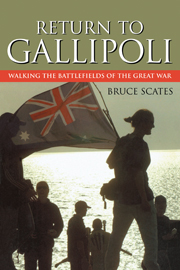Book contents
- Frontmatter
- Contents
- List of illustrations
- Note on money, measurement and terminology
- List of abbreviations
- Acknowledgments
- Introduction: journeys into history
- Part I Loss, Memory, Desire
- Part II Family Journeys
- Part III Soldiers' Tales
- 5 ‘To see old mates again’: diggers return
- 6 ‘A grave that could have been my own’: service pilgrimages
- Part IV Testament of Youth
- Conclusion: journey's end
- Epilogue: The ghost of memory
- Notes
- Survey Informants
- Index
6 - ‘A grave that could have been my own’: service pilgrimages
Published online by Cambridge University Press: 22 September 2009
- Frontmatter
- Contents
- List of illustrations
- Note on money, measurement and terminology
- List of abbreviations
- Acknowledgments
- Introduction: journeys into history
- Part I Loss, Memory, Desire
- Part II Family Journeys
- Part III Soldiers' Tales
- 5 ‘To see old mates again’: diggers return
- 6 ‘A grave that could have been my own’: service pilgrimages
- Part IV Testament of Youth
- Conclusion: journey's end
- Epilogue: The ghost of memory
- Notes
- Survey Informants
- Index
Summary
Gary completed his pilgrimage survey response in October 2000, some six months after his return from Gallipoli. Writing about the trip hadn't been easy. One of some 19 000 Australians conscripted to fight in Vietnam, war was a subject that triggered difficult memories. At the conclusion of the questionnaire he apologised for writing so little: ‘My answers were very brief, sorry.’ But there was a reason: ‘I think visiting Gallipoli was a very personal experience and not always easy to explain to people who have not fought in a war. I was in Vietnam in 1967.’ In fact, Garry had probably said as much as any of my survey respondents. ‘I cried all day’ was scrawled in capitals at the bottom of the questions.
Many soldiers' tears have often fallen on Gallipoli and not just during the fighting. Former (and current) servicemen and women make up a large proportion of Australian visitors to the Peninsula and indeed, to war graves generally. Both the RSL and the Australian War Memorial in Canberra run regular tours to the Western Front and Gallipoli; though open to all, their strongest clientele comes ‘through the services’. A tour to Gallipoli or the Western Front can also form part of a tour of duty. Servicemen and women play a key part in commemorative services; it is difficult to imagine a dawn service there without them.
- Type
- Chapter
- Information
- Return to GallipoliWalking the Battlefields of the Great War, pp. 155 - 170Publisher: Cambridge University PressPrint publication year: 2006



